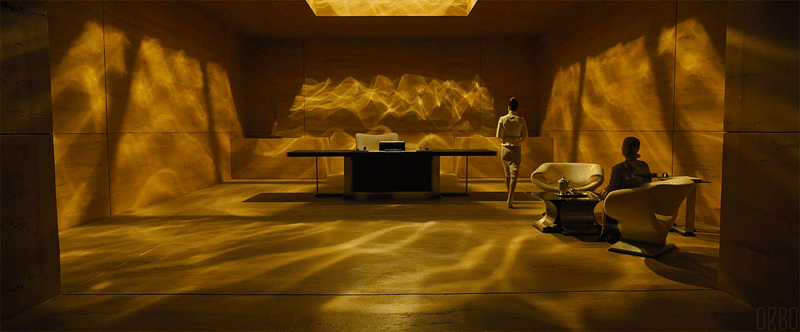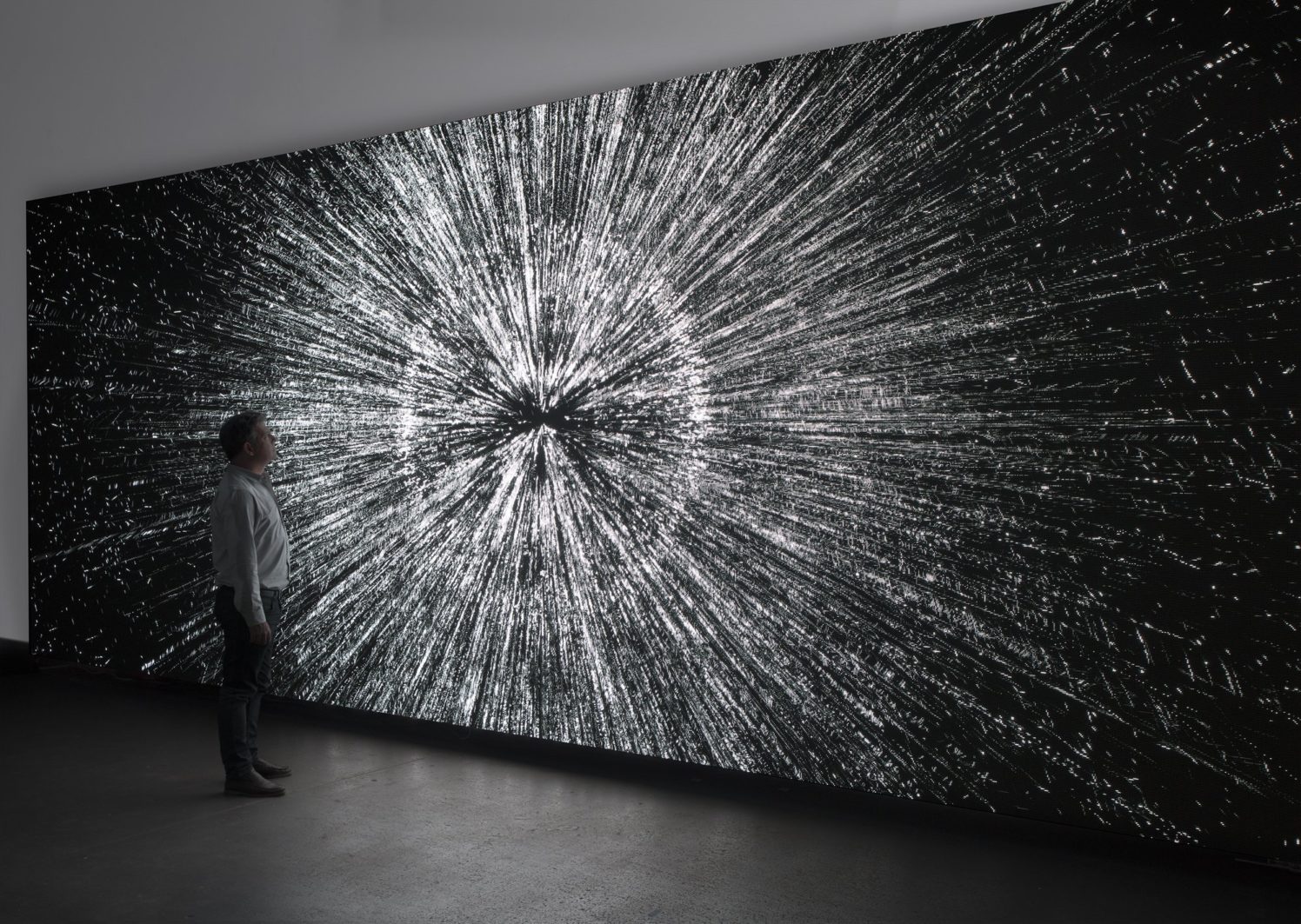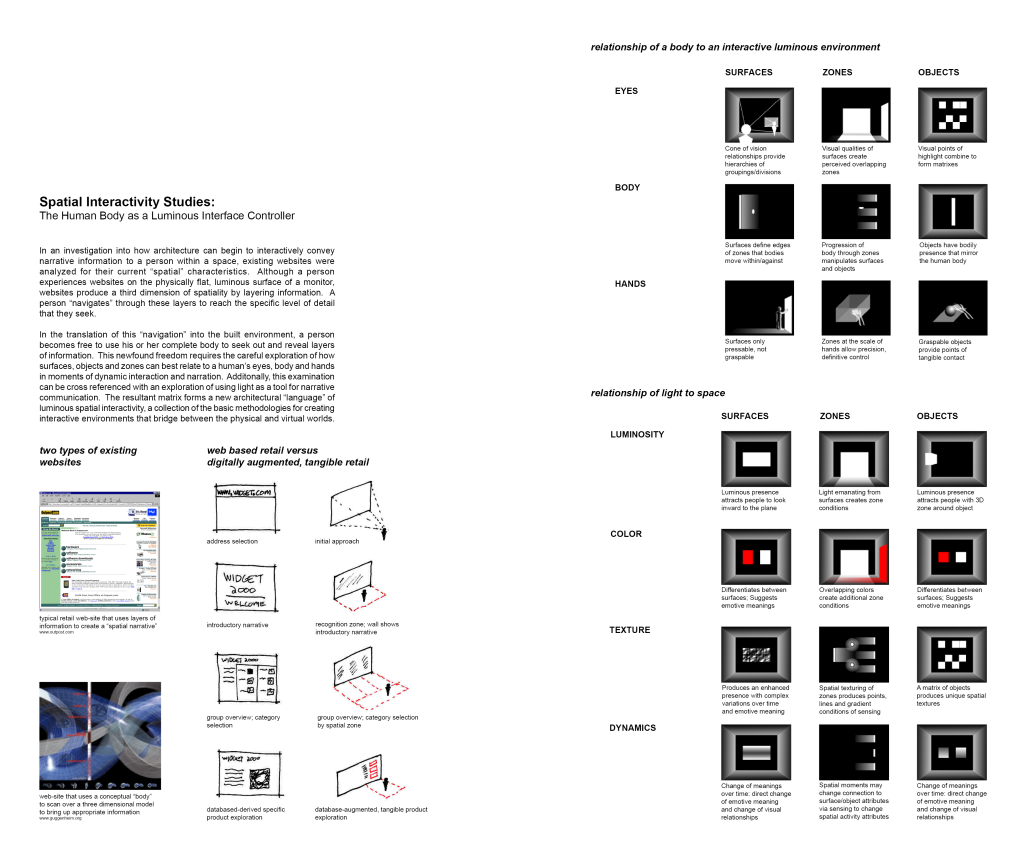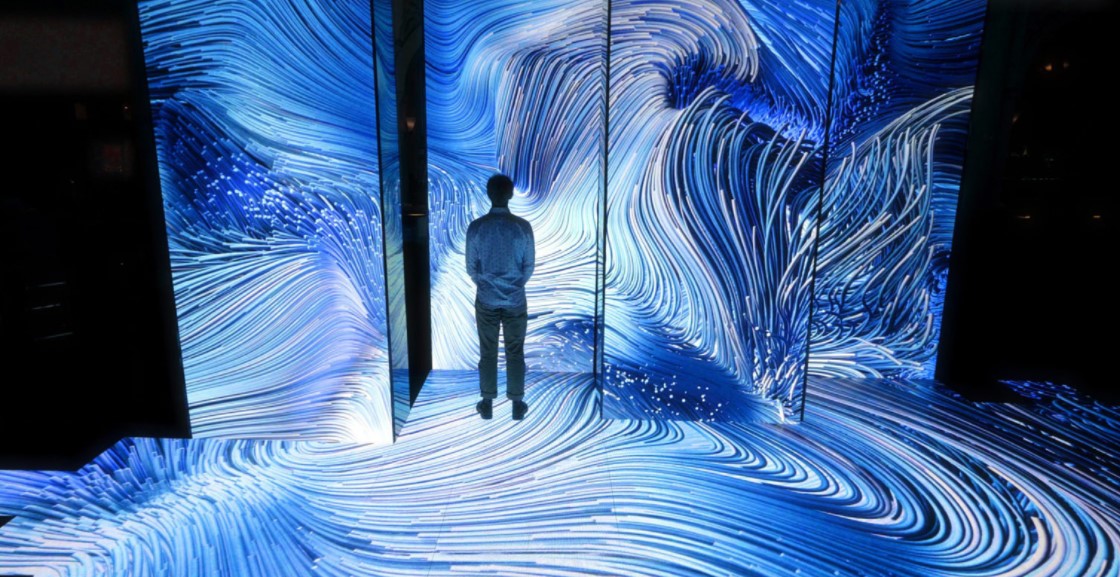Hyper vignette. It’s a term that keeps bouncing around my head when I think of the future of architectural experience design. Let me try to unpack it a bit:
Vignette – as in a brief incident or scene (such as in a play or movie)
Hyper – as in hypertext or hyperlink, implying some connection beyond in the digital world
Digital displays, dynamic luminous surfaces and other forms of digitally-controlled sensory actuators hold the potential to create highly captivating and memorable personal experiences.
The most poignant and enduring uses of such technology will be those that are intrinsically linked to a person’s occupation of the physical place itself. Which means that digital media content is not universally transferable, nor equal in impact, because its impact depends primarily on its context. And physical context depends on progression, thresholds and spatial placemaking – lighting, acoustics, materiality, etc. Digital tech must be considered along with all of those architectural design fundamentals.

Focus vs Peripheral Vision
This is very different than how most digital signage is being employed in retail, transit or urban environments, where media content is dumped onto discrete screens scattered throughout a space.
These ads wantonly demand your active attention from the first frame, shouting at you with literal imagery, direct verbal conversations and heavy handed graphic overlays. There is no seduction into the “space” of the media content – and our minds aren’t that dumb, as they will instantly tune out the demanding content to conserve brainpower or to focus on something else more important or interesting (like the smartphone in your hand).
It is readily apparent how fast people tune-out digital screens in environments like airports, malls, even urban areas. The content becomes irrelevant: No matter how gorgeous the imagery, how elaborate the video editing, how slick the motion graphics – it all just becomes visual noise that people ignore.
Interstitial Zones
To combat sensory overload/visual burn-out, designers must first make an emotional connection between the space and the person in that space.
In many situations, the first engagement with a space needs to attract us at an almost primal, subconscious level. And this happens in a fraction of a second. The acceptance of dynamic features within a spatial progression is rapid – one can only speculate this relates to our deep-rooted evolutionary nature to perceive and judge motion in our environment at a subconscious hair-trigger reaction time (is that a tiger in the bush about to eat me???)
There is a mental “space” between a person’s occupation of a space and their recognition of the qualities of that place. Retail designers understand this and create buffer zones at the front of stores where people slow down – a critical interstitial zone, an extended threshold before visitors start to recognize and confront what the store is about.
In many places, biomimetic effects realized through digital lighting or digital signage could create wonderful buffer zones, to help ease an occupant into a certain vignette.

Repetition and patterning of graphic motion effects work brilliantly as the prime attractant. There is a hypnotic, biomimetic effect that such content seems to generate – a calming yet entrancing feeling.

This quote from an Aboriginal anthropologist nicely summarizes this hypnotic quality:
“I suspect that the shimmer of light on water echoes what is going on inside our heads. This constant neurological ‘fizz’ or ‘shimmering’ of thoughts might remind us of the mesmerizing effect of sitting beside a glittering body of water, watching the light sparkle on the surface…its powerful mesmerizing or hypnotic effects…”
Veronica Strang
What most likely happens here is that these biomimetic motion effects ease our peripheral vision system into a scene setting (a vignette), with a natural shift then following from our peripheral to our active attention and focus system (which is “costly” for our brain – it takes a lot of brain power to focus on something). I believe this is why the work of Refik Anadol has proven so wildly popular. Leo Villareal is another artist that use biomimetic effects, with his artworks employing his beautiful particle physics engines with various monochromatic surfaces to stunning effect.

There is certainly a range of effect styles (beyond biomimetic) and vignette scales that can successfully seduce your attention into a spatial vignette. From as small as an elevator to as large as an urban plaza. Just a couple interesting examples below of how abstract content redefines the feeling of a space:
Such moments need to be well placed. One extremely memorable example is in the elevator of the Standard Hotel at New York’s High Line: A stunning art piece from 2008 called “Civilization” by artist Marco Brambilla turns a simple, boring elevator ride into a visual feast – literally a journey from heaven to hell.
Frankly, the video above doesn’t do justice to the experience of the content. There is something distinctive about being in a claustrophobic elevator cab, with the content matched to the physical movement upwards or downwards of the elevator, that makes the piece by Brambilla simply hypnotic.
From Seduction to Interaction
Once you’ve seduced the mind to embrace the feeling of a “live” digitally dynamic space, only then is the body ready to interact with that space, to engage a person’s precious focused-attention to concentrate on cause/effect relationships within that space. This is the “hyper” in the “hyper vignette” concept.
This engagement can be achieved via the spatial arrangement of the active objects, surfaces and zones. As I speculated many years ago in my thesis research, at the largest scale (or the “wide shot” if you think in terms of photography) a broad canvas of textural lighting/motion effects draws you in closer. As you physically move through a space, your focus can narrow to specific, tightly defined media displays, product displays, etc. Think of the human body as the mouse pointer on a desktop – where are you directing that pointer? What is the spatial equivalent of a single- or double-click?
Below is an original page from my thesis document in which I attempted to diagram the fundamental interactions possible in a physical space:

Complete or partial physical immersion?
VR headsets will be forever awkward and anti-social: It is simply frightening to “check out” of reality by blocking your eyesight. VR headsets are actually poor quality visual experiences. And while AR headsets offer slightly more potential by removing the elements of detachment and claustrophobia, there are simply far better ways to move a person progressively from the physical world to the virtual world.
Direct-view LED screens are readily available in ultra-fine pixel pitches that are needed to achieve in-real-life VR/AR/XR experiences. Plus DVLED can be constructed in any conceivable shape, like dome-shaped direct-view LED screens or the “volume” used during the filming of the Mandalorian.


Architectural scale, direct-view LED screens are already better at creating realistic digital immersion. Plus IRL VR experiences have the added benefit of being a shared, social experience. As digital content can now be built into any surface, shape or volume, or even projection-mapped onto any physical object, VR-headsets or even AR-headsets really stand no chance at being adopted in commercial retail/entertainment applications.
Hyper vignettes?
It is sad how the massive rush to smartphones and apps stopped cold the development of interactive environments. Yet the opportunity remains: Incorporating digital media content into the built environment is the next great artistic challenge for architects, lighting designers and other design specialties to embrace, explore and advance their sophistication of application knowledge.
To wrap up, digital content must be codeveloped along with the space it will reside in to maximize its impact.
Far before any elaborate interactive concepts can be achieved, first the occupants of a space must be connected to the “vibe” of the content + space. They must be seduced into the spatial experience of the digital storytelling.
Once that has been achieved, digital interactivity can be layered to heighten this storytelling, to help reveal information and ensure that it resonates with the occupants, giving them layers of depth + data that they will progressively seek. I called that effect revelations and resonance.
So is “hyper-vignette” the best term for this? A term that indicates some sort of personalized scale of experience, with digital content layered to attract, retain and engage occupants?
